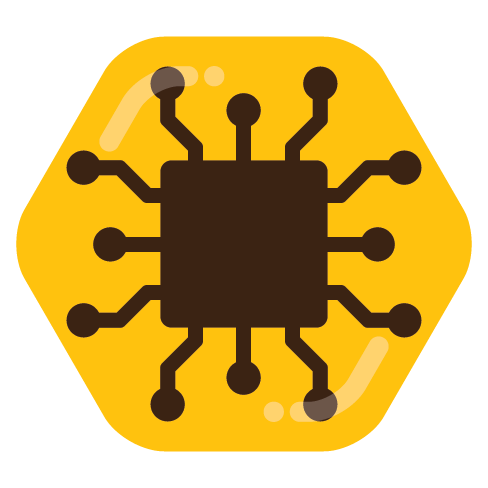In a forest, away from humans, under trees, you won’t have a signal to send SMSs or get a data connection either.
Dreadino
- 0 Posts
- 9 Comments

 14·8 months ago
14·8 months agoI connected my sectional garage door using a Shelly 1, an Aqara vibration sensor and the contact sensor from my alarm system (but you can use an Aqara door sensor), using Home Assistant to create a “virtual” door that does all the things.
Put the vibration sensor around the bottom of the door. Connect the Shelly to the hardware button you have somewhere in your garage, set it to toggle off after 1 second (simulating a button click basically). In Home Assistant do something like this:
- platform: template covers: garage_door: device_class: garage friendly_name: "Garage Door" value_template: >- {% if is_state( "binary_sensor.garage_door_contact_sensor", "off") %} closed {% elif states( "sensor.garage_door_vibration_sensor_angle_y") | int < 10 %} open {% elif is_state( "binary_sensor.garage_door_vibration_sensor_vibration", "on") %} opening {% else %} open {%- endif %} open_cover: service: script.disarm_alarm_if_armed_then_open_garage_door close_cover: service: switch.turn_on data: entity_id: switch.garage_door_shelly_1 stop_cover: service: switch.turn_on data: entity_id: switch.garage_door_shelly_1 icon_template: >- {% if is_state( "binary_sensor.garage_door_contact_sensor", "off") %} mdi:garage {% elif states( "sensor.garage_door_vibration_sensor_angle_y") | int < 10 %} mdi:garage-open {% elif is_state( "binary_sensor.garage_door_vibration_sensor_vibration", "on") %} mdi:garage-alert {% else %} mdi:garage-open {%- endif %}Basically if the contact sensor is off (means there is contact), the door is closed. If the vibration sensor angle is < 10 (check your values, this works for me), the door is open (the sections are now horizontal). If the vibration sensor senses vibrations, the door is currently moving. Otherwise report “open”, because that’s the worst state and if something doesn’t work, I want the worst state to be reported. Now you have a “cover”, which in Home Assistant is a class that has custom UIs and logic to handle the door. Whenever I click the open button or call the command from anywhere, “disarm_alarm_if_armed_then_open_garage_door” is called, meaning I can’t make the alarm go off by accident.
I have an automation that when I get near my house, it checks if my alarm is on and sends me a notification with 2 actions:
- disarm alarm
- disarm alarm and open garage door
PS: Looking back at my code, I should add a condition to both “open_cover” and “close_cover”, to check if the door is opening, making it fail (or just do nothing), because while moving, pressing the button would stop the door, not make it go in the reverse direction. But it’s been 4 months with this integration and it works great.

 41·8 months ago
41·8 months agoWhile videogames are great, a hobby that dabbles with real things will stimulate you very differently. Touching stuff with your hands, the gap between what you want and what comes out of your work, the search for materials and techniques and other aspects of working with real stuff and not on predefined paths, will engage with your brain in a very different way.
Videogames and “real” hobbies (as in hobbies that use real stuff) are great together in my opinion, they complement and fuel each other.
I got my PS2, with GTA3, for Xmas. No memory card though, so I stayed up all night to play it, not realizing I could just left it on. I bought the memory card 3 days later, when shops reopened, the PS2 was never shut down.

 11·9 months ago
11·9 months agoThe fine was 1b, 10 years ago. Nowadays chips have a geopolitical importance, so they lowered the fine to keep one of the most important player happy. Intel is finalizing contracts for billions here in Europe to build chip factories.
This was a smart political move, not a mathematical operation

 21·10 months ago
21·10 months agoI used to use Octoprint to connect to an Ender 3, which didn’t come with an internet connection. Now that I have an Ankermake M5, I don’t use it anymore.
You could connect your desktop to the 3D printer, I don’t think a Raspberry is required.
The problem is that a webapp will not offer a ui native to a OS. Android, iOS, web, macOS, Windows, all have different ideas about everything that’s concerning the UI and UX, from the way to go back, to the position of buttons, to the durations of animations, to the bounciness of things on the screen. Either the web developer creates 5 different ui/ux version of the same app and preys that the browser supports everything he needs, or the webapp will feel native at best on 1 OS.
Applications also have access to APIs that a webapp can’t use, like widgets, shortcuts in various parts of the OS, deeper access to bt, contacts, cameras and a slew of other things. Even a “simple” usecase as Reddit/Lemmy could use deeper APIs than what a webapp can do.
That said, I’m at about 60 delivered apps, at least 20 of them should have been websites.
I’m an Android developer, I usually spot a non native app immediately and the flaws in the ui are really annoying. Web apps are even worse.

It’s not, it’s just that forests are really bad for phone signals. Trees disrupting the signal, valleys and sides of mountains with no direct view of antennas and just remoteness in general. I’ve been in a lot of forests with no cell reception, that’s why you always go with an offline map and tell someone where you are going.
It’s not a case that one of the leading phone company in the world has a satellite emergency mode.